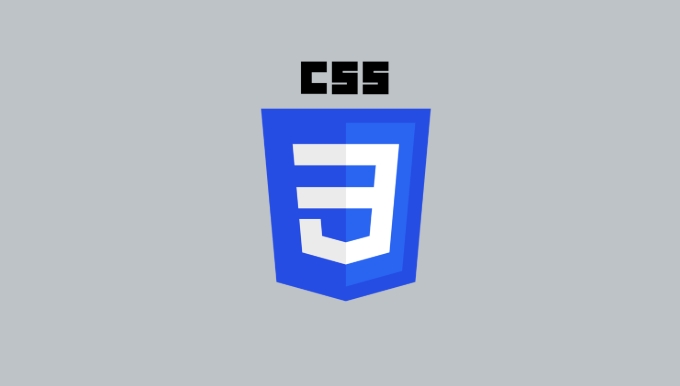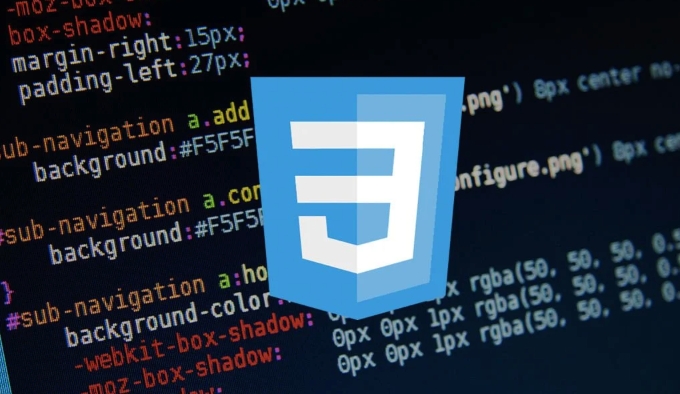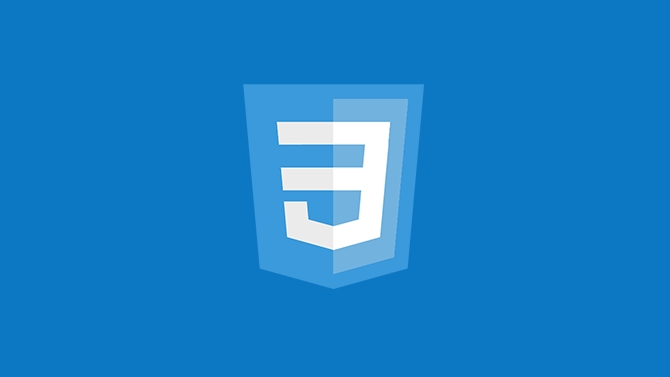How can HTML tables be effectively styled with CSS? 1. Start by applying base styles like border-collapse, padding, and background colors to headers for a clean layout. 2. Enhance readability with zebra stripes using :nth-child(even) and add hover effects for interactivity. 3. Control borders and use a scrollable container to improve mobile responsiveness, or restructure into card-like layouts via media queries on small screens. 4. Prioritize accessibility with scope attributes and selectively hide non-essential columns on mobile devices.

Styling HTML tables with CSS might not be the most glamorous part of web design, but it’s definitely one of those things that can make a big difference in how your data looks and feels to users. Whether you're building a simple comparison table or a complex dashboard, learning how to control spacing, borders, colors, and responsiveness will save you headaches later.

Let’s dive into some practical tips and techniques.

Basic Table Structure and Default Styles
Before jumping into styling, it's good to understand what a basic HTML table looks like:
<table>
<thead>
<tr><th>Header 1</th><th>Header 2</th></tr>
</thead>
<tbody>
<tr><td>Data A1</td><td>Data B1</td></tr>
<tr><td>Data A2</td><td>Data B2</td></tr>
</tbody>
</table>By default, browsers apply minimal styles — just plain text with no borders or padding. That means if you want your table to look clean and readable, you’ll need to add those styles yourself.

Here are a few common base styles to start with:
- Use
border-collapse: collapse;to remove double borders between cells. - Add padding inside
thandtdfor better readability. - Apply background colors to headers (
th) to visually separate them from body rows.
table {
border-collapse: collapse;
width: 100%;
}
th, td {
padding: 12px;
text-align: left;
border-bottom: 1px solid #ddd;
}
th {
background-color: #f5f5f5;
}This gives your table a much cleaner appearance without being too flashy.
Adding Visual Enhancements
Once you've got the basics down, you can make your table more user-friendly with a few visual touches.
Zebra Stripes for Readability
Alternating row colors help users scan long tables more easily. You can do this with the :nth-child(even) selector:
tr:nth-child(even) {
background-color: #f9f9f9;
}Hover Effects for Interaction
Adding a hover effect on rows helps users know they’re interacting with a clickable or selectable item (especially useful in dashboards):
tr:hover {
background-color: #f1f1f1;
}Borders and Rounded Corners
If you want visible borders around all cells, skip border-collapse and use individual borders instead. Also, wrapping the table in a container with overflow-x: auto; is a good idea for mobile responsiveness.
table {
border-collapse: separate;
border-spacing: 0;
}
th, td {
border: 1px solid #ccc;
}
.table-wrapper {
overflow-x: auto;
}Making Tables Responsive
One of the biggest pain points with HTML tables is making them mobile-friendly. Here are a few approaches depending on your needs:
Wrap It in a Scrollable Container
This is the simplest solution. Just wrap your table in a div and apply horizontal scrolling:
<div class="table-wrapper"> <table>...</table> </div>
.table-wrapper {
overflow-x: auto;
}Convert to Cards on Small Screens
For a more advanced layout, you can use media queries to switch the table layout to something card-like on smaller screens. This requires more work and usually involves restructuring the HTML using display: block or flex/grid layouts for mobile only.
A quick example:
@media (max-width: 600px) {
table, thead, tbody, th, td, tr {
display: block;
}
th {
position: sticky;
top: 0;
background: white;
z-index: 1;
}
}It’s not perfect, but it gets the job done when space is tight.
Final Touches and Tips
- Don’t forget about accessibility — use
scope="col"on headers so screen readers can properly associate data. - If your table has many columns, consider hiding less important ones on small screens using media queries and
display: none. - Avoid overly complex styling — sometimes simplicity works best for data-heavy tables.
- Test your table across devices and browsers. Some older browsers may not fully support certain CSS properties.
That covers the essentials of styling HTML tables with CSS. It’s not complicated, but there are enough edge cases and browser quirks to keep things interesting. Once you get the hang of it, though, tables become a lot easier to manage.
The above is the detailed content of A complete CSS tutorial on styling HTML tables. For more information, please follow other related articles on the PHP Chinese website!

Hot AI Tools

Undress AI Tool
Undress images for free

Undresser.AI Undress
AI-powered app for creating realistic nude photos

AI Clothes Remover
Online AI tool for removing clothes from photos.

Clothoff.io
AI clothes remover

Video Face Swap
Swap faces in any video effortlessly with our completely free AI face swap tool!

Hot Article

Hot Tools

Notepad++7.3.1
Easy-to-use and free code editor

SublimeText3 Chinese version
Chinese version, very easy to use

Zend Studio 13.0.1
Powerful PHP integrated development environment

Dreamweaver CS6
Visual web development tools

SublimeText3 Mac version
God-level code editing software (SublimeText3)

Hot Topics
 How can I include CSS only on some pages?
Jun 11, 2025 am 12:01 AM
How can I include CSS only on some pages?
Jun 11, 2025 am 12:01 AM
There are three ways to selectively include CSS on a specific page: 1. Inline CSS, suitable for pages that are not frequently accessed or require unique styles; 2. Load external CSS files using JavaScript conditions, suitable for situations where flexibility is required; 3. Containment on the server side, suitable for scenarios using server-side languages. This approach can optimize website performance and maintainability, but requires balance of modularity and performance.
 Flexbox vs Grid: Understanding the Key Differences in CSS Layout
Jun 10, 2025 am 12:03 AM
Flexbox vs Grid: Understanding the Key Differences in CSS Layout
Jun 10, 2025 am 12:03 AM
Flexboxisidealforone-dimensionallayouts,whileGridsuitstwo-dimensional,complexlayouts.UseFlexboxforaligningitemsinasingleaxisandGridforprecisecontroloverrowsandcolumnsinintricatedesigns.
 Creating an Auto-Closing Notification With an HTML Popover
Jun 10, 2025 am 09:45 AM
Creating an Auto-Closing Notification With an HTML Popover
Jun 10, 2025 am 09:45 AM
The HTML popover attribute transforms elements into top-layer elements that can be opened and closed with a button or JavaScript. Popovers can be dismissed a number of ways, but there is no option to auto-close them. Preethi has a technique you can u
 What is 'render-blocking CSS'?
Jun 24, 2025 am 12:42 AM
What is 'render-blocking CSS'?
Jun 24, 2025 am 12:42 AM
CSS blocks page rendering because browsers view inline and external CSS as key resources by default, especially with imported stylesheets, header large amounts of inline CSS, and unoptimized media query styles. 1. Extract critical CSS and embed it into HTML; 2. Delay loading non-critical CSS through JavaScript; 3. Use media attributes to optimize loading such as print styles; 4. Compress and merge CSS to reduce requests. It is recommended to use tools to extract key CSS, combine rel="preload" asynchronous loading, and use media delayed loading reasonably to avoid excessive splitting and complex script control.
 How to use Lotties in Figma
Jun 14, 2025 am 10:17 AM
How to use Lotties in Figma
Jun 14, 2025 am 10:17 AM
In the following tutorial, I will show you how to create Lottie animations in Figma. We'll use two colorful designs to exmplify how you can animate in Figma, and then I'll show you how to go from Figma to Lottie animations. All you need is a free Fig
 Breaking Boundaries: Building a Tangram Puzzle With (S)CSS
Jun 13, 2025 am 11:33 AM
Breaking Boundaries: Building a Tangram Puzzle With (S)CSS
Jun 13, 2025 am 11:33 AM
We put it to the test and it turns out Sass can replace JavaScript, at least when it comes to low-level logic and puzzle behavior. With nothing but maps, mixins, functions, and a whole lot of math, we managed to bring our Tangram puzzle to life, no J
 External vs. Internal CSS: What's the Best Approach?
Jun 20, 2025 am 12:45 AM
External vs. Internal CSS: What's the Best Approach?
Jun 20, 2025 am 12:45 AM
ThebestapproachforCSSdependsontheproject'sspecificneeds.Forlargerprojects,externalCSSisbetterduetomaintainabilityandreusability;forsmallerprojectsorsingle-pageapplications,internalCSSmightbemoresuitable.It'scrucialtobalanceprojectsize,performanceneed
 Does my CSS must be on lower case?
Jun 19, 2025 am 12:29 AM
Does my CSS must be on lower case?
Jun 19, 2025 am 12:29 AM
No,CSSdoesnothavetobeinlowercase.However,usinglowercaseisrecommendedfor:1)Consistencyandreadability,2)Avoidingerrorsinrelatedtechnologies,3)Potentialperformancebenefits,and4)Improvedcollaborationwithinteams.






